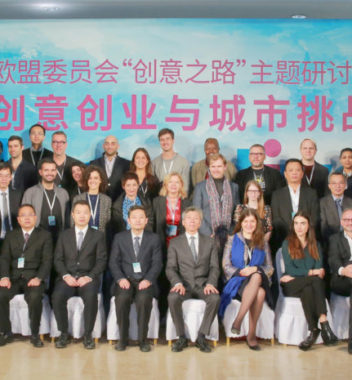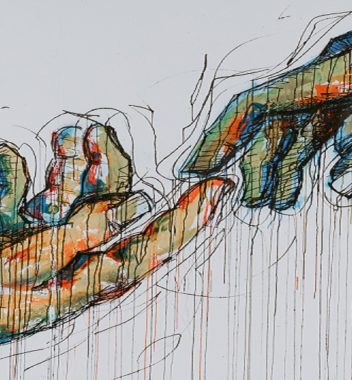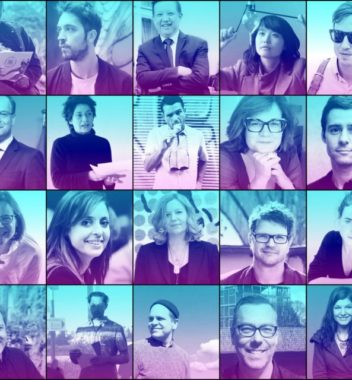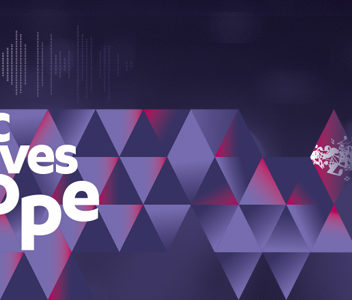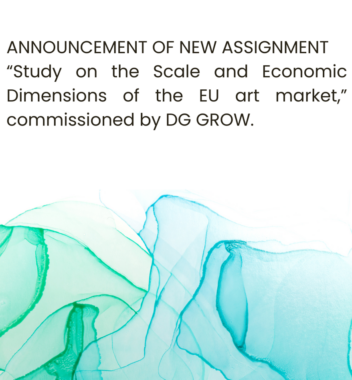
Technological advancements have always been pivotal to the cultural and creative industries (CCIs). Today, with the rise of Artificial Intelligence (AI), they face another wave of change that we must manage and turn to our advantage. This article aims to contribute to this strategy by providing recent examples of how different CCIs have organized themselves to navigate uncertainties, protect their interests, and maintain business continuity without stagnation. Additionally, it will introduce the impact of the AI Act, a European law enacted on July 12th, and its relevance to the cultural and creative sectors.
First, let’s clarify the terms. What is Generative AI, and how is it different from Traditional AI?
AI is a technology that enables computers and machines to simulate human intelligence and problem-solving capabilities. Traditional AI, also called Narrow AI, excels at analysing data and performing specific tasks using predetermined algorithms. It is designed to perform well-defined tasks, such as image recognition or language translation, but its capabilities are limited to those tasks. Generative AI, on the other hand, is a more advanced form of AI that can analyse and learn from existing data to create new content. This technology can generate a wide array of content, including images, videos, music, speech, text, software code, and product designs. Unlike Traditional AI, Generative AI captures the essence of its training data without directly replicating it, enabling it to produce original and diverse outputs.
The implications of this technology can be significant for the CCIs. For instance, in music, Generative AI can compose melodies, harmonies, and even entire pieces, providing musicians with fresh inspiration and new directions. In literature, it can aid writers in brainstorming plots, characters, and dialogues, accelerating the storytelling process. In film and video production, Generative AI can assist in generating visual effects, backgrounds, or even entire scenes, reducing production costs and time.
However, as all innovations, this technology bears as well its challenges. In fact, from AI-authored literary works earning Pulitzer nominations to contentious debates over the use of generative AI in creative processes, debates and discussions have emerged about the possible negative impacts of Generative AI. Ethical considerations, the potential for job displacement, and issues related to intellectual property are at the forefront of these concerns. The unauthorized use of copyrighted materials for training AI models can lead to disputes over intellectual property rights, as underscored by Midjourney’s legal battle. Additionally, there is a risk of devaluing original artistic works if Generative AI floods the market with easily and quickly produced content. Furthermore, questions regarding the authenticity and authorship of AI-generated creations may challenge traditional notions of artistic identity and integrity.
To address these challenges and respond to new needs, various CCIs have taken proactive steps. Here are three distinct examples from within and outside Europe, demonstrating how different sectors have been actively tackling these issues. These examples include agreements, tools, and awareness-raising platforms, setting the stage for discussing the AI Act, the first legislation presenting a framework to govern the development and use of AI while prioritizing the protection of fundamental rights.
An oversee union example: the Hollywood strikes
A recent example comes from the audiovisual industry in the United States. Last summer, leading entertainment unions went on strike in what has been recognized as one of the industry’s most significant labour disputes in decades. One of the unions that decided to strike was SAG-AFTRA, which represents the Screen Actors Guild and the American Federation of Television and Radio Artists. This union advocates for approximately 160k media professionals, including actors, broadcast journalists, dancers, DJs, program hosts, singers, stunt performers, and voiceover artists.
SAG-AFTRA initiated a strike in July 2023 due to contractual disputes with production companies and streaming platforms, focusing on issues such as residuals and the use of new technologies like AI. As negotiations progressed, AI emerged as a significant point of contention. The union expressed concerns about AI being used to replicate an actor’s likeness, leading to complex issues regarding compensation and creative ownership. The strikes ended in November 2023 after SAG-AFTRA reached an agreement with the studios, aimed at generating more than $1 billion in new compensation and benefit plan funding.
Key points of the agreement included:
- Informed consent and compensation for the creation and use of AI digital replicas of SAG-AFTRA members, whether created on set or obtained from other materials.
- Consent requirements for the use of a performer’s name and features to prompt a generative AI system to create synthetic performers or fakes.
The work of the union continues as in January 2024, SAG-AFTRA has reached an agreement with video game studios regarding the informed consent for the use of AI to create digital voice replicas, as well as requirements for the safe storage of digital assets. The deal sets minimum terms and conditions, requiring companies to obtain consent before using replicated voices and allowing performers to decline the continuous use of their voices in future projects. As a consequence of this agreement, Replica, a company that aims to build “the world’s greatest library of AI-powered voice actors,” would be able to license AI voices for video game development and other media projects.
The Text and Data Mining Reservation Protocol
A W3C community group1, proposed by the Federation of European Publishers (FEP), and co-chaired by the Italian Editors Association (AIE) and EDRLab, has developed a Text and Data Mining Rights Reservation Protocol. This mechanism is designed to manage the use of text and data mining for digital content, particularly within the framework of copyright law and digital licensing agreements. The TDM protocol empowers rightsholders to express the reservation of rights for text and data mining in machine-readable language (“opt-out”). This protocol ensures that publishers, researchers, and other stakeholders can effectively manage and utilize digital content for TDM purposes while respecting copyright restrictions.
In the context of AI, the TDM Reservation Protocol plays a critical role in managing the use of digital content for training and developing AI models as it:
- Provides a structured way to acquire and use text and data from various digital sources, ensuring that the data used respects copyright and licensing agreements.
- Clearly delineates the terms of use and access rights, allowing stakeholders to understand the provenance of the data and ensuring accountability in its use, enhancing transparency in how data is collected and used for AI.
- Includes mechanisms for resolving disputes and ensuring compliance with licensing terms.
Ultimately, by establishing a comprehensive framework for accessing and using digital content for AI training and development, the protocol aims to balance fostering innovation in AI with protecting the rights of content creators. It ensures legal compliance, promotes the ethical use of data, and supports the advancement of AI technology by providing clear guidelines and standardized practices for data acquisition and use.
CLIP Creators Learn Intellectual Property – An awareness raising platform
CLIP is an online platform developed by the World Intellectual Property Organization (WIPO) in collaboration with the Music Rights Awareness Foundation. Launched on November 17, 2023, CLIP is designed to educate creators about their intellectual property (IP) rights and related management practices (WIPO, 2023). The platform is free and offers curated content from experienced musicians and mentors, aimed at helping creators make informed business decisions and ensuring they receive fair recognition and compensation for their work. By making information accessible globally and in multiple languages (6), CLIP aims to address the knowledge gap faced by many creators regarding IP rights – hence, in the context of AI, the platform provides resources to help creators understand how IP laws apply to AI-generated content and act if necessary.
While the examples showcased above are all industry driven initiatives, the next step is an institution-driven example– the first of its kind worldwide: The AI Act.
Published on July 12th, this legislation aims to govern the development and deployment of AI technologies within the EU, it brings with it profound implications for various industries, including the CCS.
Let’s have a short dive into what are the implications of this AI regulation milestone for the CCS and how the sector’s players can use this to their advantage.
Notably, it mandates the labeling of AI-generated content, ensuring that works produced by AI are distinguishable from those created by human hands. This directive aims to prevent instances where AI-generated creations mistakenly receive acclaim or recognition meant for human-authored content, a scenario that has previously sparked controversy.
Additionally, as we have already discussed, the Act reinforces copyright protections concerning the use of datasets for AI training. It stipulates that AI developers must respect copyright laws when utilizing creative works, requiring explicit permissions from rights holders where necessary. This provision seeks to safeguard artists and authors from exploitation while promoting fair compensation for the use of their creations in AI development.
The Creative Industries of Europe have expressed cautious optimism regarding the new legislation. In a joint statement, organisations praised the EU’s proactive approach to AI governance while emphasizing the importance of effective implementation to protect creative works. Their advocacy underscores the significance of involving rights holders in the enforcement and refinement of AI regulations, ensuring that these measures uphold the integrity and rights of artists across diverse creative fields. This could be concretized in the AI strategy for cultural and creative industries called for by the president of the European Commission, Ursula von der Leyen, in her recent Mission Letter to Glenn Micaleff, designated commissioner for Intergenerational Fairness, Youth, Culture, and Sport.
Commissioner Thierry Breton emphasized the balanced approach of the AI Act, stating, “We are regulating as little as possible, but as much as needed.” This approach reflects the EU’s commitment to fostering innovation while mitigating risks associated with AI technologies, particularly in sensitive domains like culture and creativity.
Looking ahead, the implementation of the AI Act will unfold over the coming years, with the establishment of guidelines and practices by the newly formed European Commission’s AI Office. This regulatory framework is poised not only to shape the future development of AI within the EU but also to serve as a model for responsible AI governance globally.
As Europe pioneers AI regulation, stakeholders in the CCIs are encouraged to familiarize themselves with the new requirements and engage in shaping its practical applications. While challenges and adjustments lie ahead, the EU AI Act represents a landmark step towards balancing innovation with ethical considerations, setting a precedent for AI governance worldwide.
Other Sources
SAG-AFTRA. (2024).AI goes to Hollywood. Retrieved from https://www.sagaftra.org/videos/ai-goes-hollywood-2024
World Economic Forum. (2024, March). How AI played a role in the Hollywood strikes. Retrieved from https://www.weforum.org/agenda/2024/03/ai-hollywood-strike-sag-aftra-technology/

